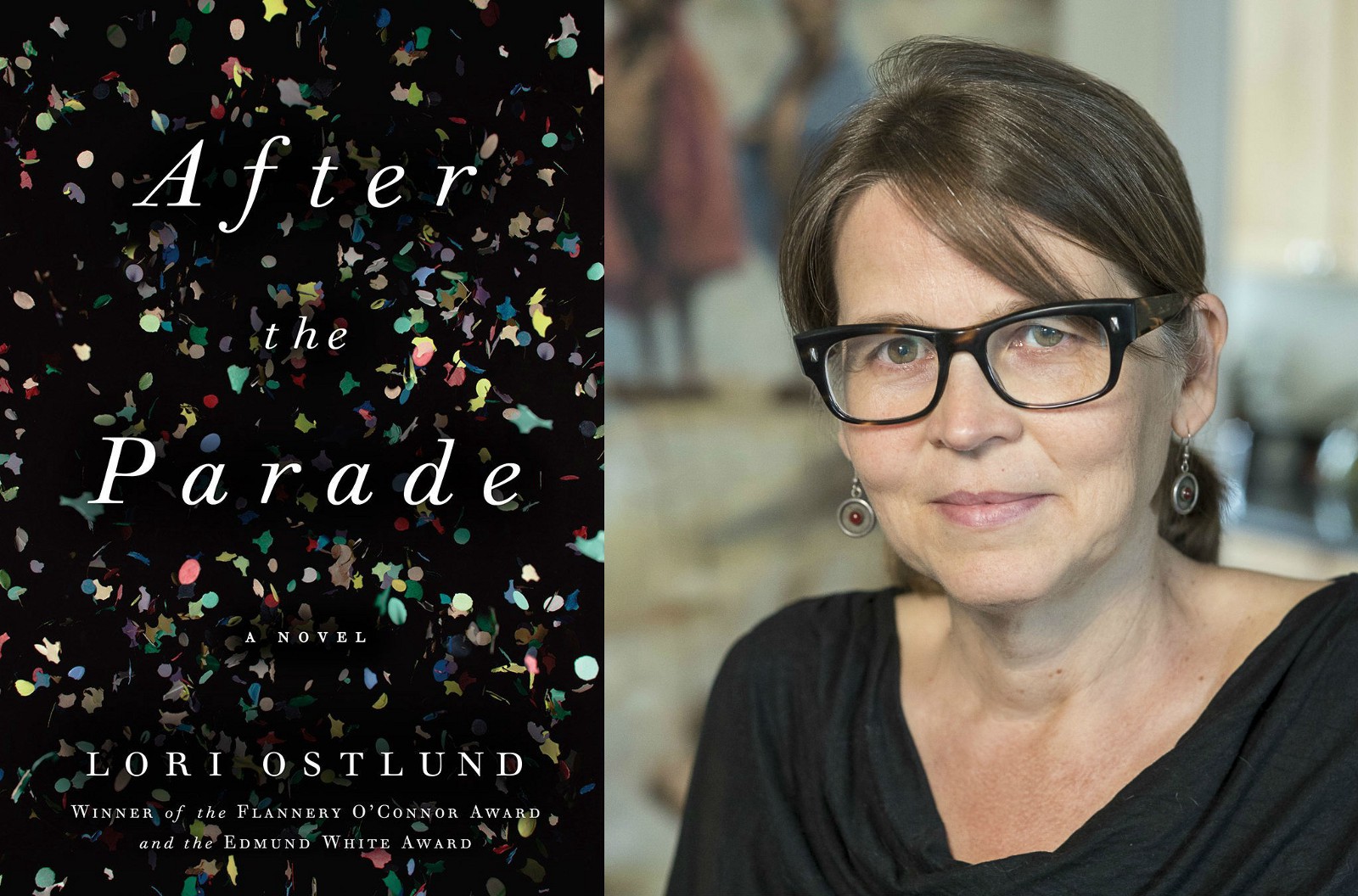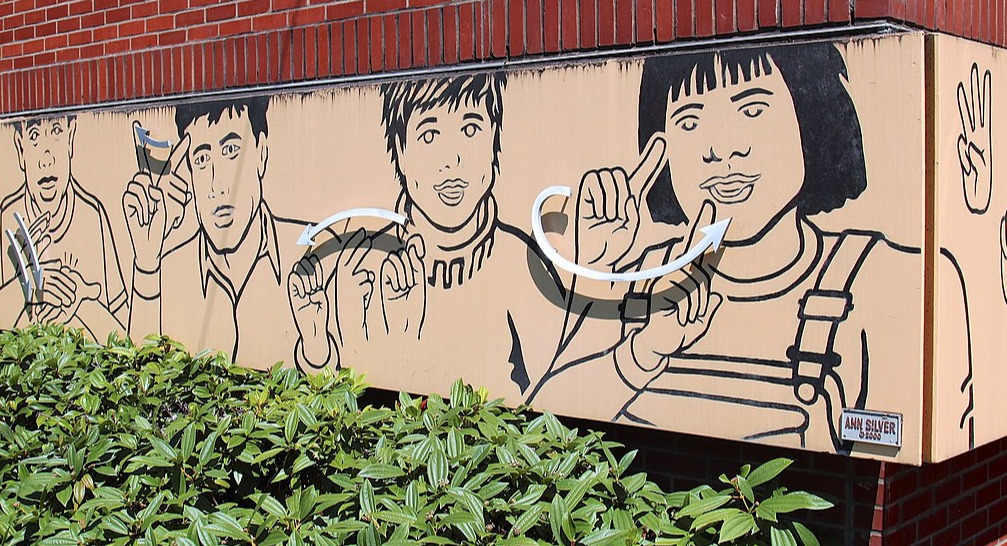Interviews
Say Your Life Broke Down: An Interview With Lori Ostlund, Author Of After the Parade

I first became familiar with Lori Ostlund’s work in college, when Jessica Treadway, a professor and writer I admired then and now, gave me a scanned copy of “Upon Completion of Baldness,” a story from Ostlund’s collection The Bigness of the World, which won the Flannery O’Connor Award for Short Fiction in 2008. It is the kind of story — like Michael Cunningham’s “White Angel,” like Joy Williams’s “Escapes,” like Laura van den Berg’s “Where We Must Be” — that makes you want to quit, give up writing altogether, because you know, you are certain, you will not write a story half as good as the one you’ve just finished. (We should be grateful for these stories, by the way; grateful for the invigoration that takes over once that crushing self-doubt subsides.) I immediately wrote Ostlund a fan letter and bought a copy of her collection, devouring the rest of it within a few days, shocked to find that each story was somehow as good as “Upon Completion of Baldness,” a story that, to this day, after having read it now dozens of times, still leaves me weeping with its last few paragraphs. (Sidenote: Scribner will be reprinting the collection in paperback in February of 2016.)
The day I received a galley of After the Parade (Scribner 2015), Ostlund’s first novel, I actually cancelled a first date so that I could instead stay up until the sunrise to devour the book in one sitting, a decision about which I have zero remorse. Not that chances at first dates are constantly coming my way — this is not at all the case — but even more rare is a book like After the Parade, an unforgettable novel of stunning grace and wisdom and wit that cements Lori Ostlund as one of the most gifted writers publishing today. She manages to crystallize what seems so ineffable, to make new and foreign the familiar. She digs deeper into every gesture, every line of dialogue, in search of the true origin and intention, going below the surface of language any writer would be proud of, in order to coax out even more. She is a writer in search of nuance, precision, and understanding, and she finds it on every page of this novel. If you don’t believe me, just ask The Center for Fiction, who shortlisted After the Parade for its 2015 First Novel Prize.
It was a privilege to speak with Lori about the novel.
Vincent Scarpa: I wonder if you can start by talking about how this novel came to be. I know you worked on it for quite some time — was it fifteen years, you said? Was it something that you abandoned and then returned to? Or was that simply the amount of time required to fully realize and render this world?
Lori Ostlund: I started writing the character of Aaron around 1999 or 2000, though even before that I had written sketches about an imaginary small town in Minnesota with a café and a hardware store and a possible main character who was very much like Bernice, the misanthropic baker who becomes Aaron’s best friend as a teenager. A part of me is quite drawn to misanthropes, but I quickly realized that I was more interested in creating a main character who leaves this small town, and I understood early on that Bernice did not have it in her to go out in the world.
In most things I take a quite rational approach and assume that if I sit down with a problem and work steadily at it, it will resolve itself, but when it comes to writing, that simply isn’t the case.
When I began writing Aaron, I had much different ideas for him because I was working with a concept, and concepts are rarely successful for me. I’ve never abandoned the book, but I did let it sit for long periods. I’m a big believer in letting things sit because sometimes my subconscious just needs time to work things out, which was hard for me to accept early on. In most things I take a quite rational approach and assume that if I sit down with a problem and work steadily at it, it will resolve itself, but when it comes to writing, that simply isn’t the case. I tend to know when something isn’t right — quite often the ending — but it generally takes me a long time to figure out how to make it right. During those thinking periods, I usually do other things — work on stories, take a lot of walks, travel, read, get on with life.
During this 15-year period, for example, I wrote my story collection The Bigness of the World, ran and then closed an Asian furniture store in New Mexico, moved to San Francisco and started a new life here, moved to Chapel Hill, North Carolina for two years, where I served as the visiting writer at UNC, and came back here to San Francisco. At the beginning of 2013, my very wise and patient agent said, “Okay, you need to finish the book by August.” I panicked because I was carrying a heavy teaching load at the time, but in May my load lightened, and I began spending around 70 hours a week in my writing dungeon. During those months, I was able to hold the whole book in my head and piece together the story from the hundreds of pages I had written over the years, trying to figure out who Aaron was and what his story would be.
VS: One of the many things that’s absolutely stunning about After the Parade is the expert weaving of time. The novel asks the reader to trust that all detours and digressions from the “now” of the novel are necessary, and it never ceased to surprise me, both times I read this book, how gracefully you move us along, nary a hiccup from past to present, from page to page. I wonder if you might talk a bit about how you went about structuring the novel. Did you know, setting out, that the scope would be this large — the size of Aaron’s life? And what, in your mind, is achieved or allowed in a nonlinear novel in which we’re boomeranging from past to present and back again?
LO: Thank you, Vincent. I have often described my writing style as digressive. I love tangents — particularly the idea of a story within a story within yet another story, for example — and I’m always interested in seeing how far I can digress before I lose the narrative thread completely and/or the reader’s good will. I’m also interested in what people don’t say and in thinking about how to render that on the page, and often digression, talking around a subject but never about a subject, is one of the ways to put on the page what isn’t being said. My first finished draft was over 500 pages, but I cut around fifty before my agent went out with it. Then, my editor, Liese Mayer at Scribner, helped me cut another hundred. She was so good at figuring out the places that digressions needed to be reined in.
When I started writing about Aaron, he was five years old, but I realized that I had a problem when I’d written perhaps 400 pages and he was just seven or eight. At that point, I set the book aside to think — when I went back to it, I started writing about him as an adult. I knew that he had a much older lover, so I wrote a lot about that, thinking that that might be a big part of the story, but ultimately I decided that the book’s baseline present would begin with when he leaves Walter, his lover, and moves to San Francisco, and the past would largely be childhood flashbacks. Structurally, I wanted the past and present together in order to mimic the way that memory works, particularly during moments of transition: though the book is told in third-person, it’s a close third, and I hoped to create the feeling that as Aaron attempts to move forward with his new life, everything around him triggers memories of his past. In the present, he is walking and teaching and sitting in his noisy garage apartment, but each of these activities leads him backward to his mother and childhood.
The book was written in pieces, and when I started to piece it together during the long summer of 2013, I decided to break the present into a six-month period beginning with his leaving of Walter. I spent a lot of time sifting through all of the pieces that I had written over the years and either discarding them or pasting them into this six-month timeline. In doing so, I cut back substantially on the middle years, those years that he spent with Walter, yet in many ways, those were the hardest pieces to place in terms of the arc of the novel.
VS: Something this novel seems to have under its lens is the notion of curiosity — about alternative ways one might live, about the way things might have been, the mysteries of an unsolved life — and the way in which that curiosity might activate dramatic action. That curiosity is part of the reason Aaron, at the beginning of this novel, leaves his own life with Walter to start anew. Not unlike his mother, Aaron fears stagnancy, fears settling. And yet we are reminded by Clarence, a dwarf with whom Aaron forges a connection as a child, that, “there’s something to be said for the security of the familiar, in all its confining glory.” What were you aiming to examine here?
In many ways, I believe that curiosity saved me, that and the fact that I didn’t see a place for myself where I grew up.
LO: On many levels, the idea of parallel lives is very personal for me. I grew up in a town of 400 people and left in 1983, as does Aaron, but I think that both he and I are drawn to those who cannot leave the familiar. In many ways, I believe that curiosity saved me, that and the fact that I didn’t see a place for myself where I grew up. I read constantly, and though I did not come out until I was in graduate school, I sensed on some level that I was different. My story collection dealt with this theme also, parallel lives and the reasons that some are drawn out into the world while others turn inward. For me, the ocean has always been the ideal metaphor: I first saw it when I was twenty-four, and I remember being struck, as I looked at it, by the enormity of the world. What I realized then was that there are those who feel overwhelmed by that bigness, by all that they do not know, and there are those who feel comforted by that bigness because they see that there is so much more to see and know. I feel a great affinity for those in the former camp, but I am firmly in the latter camp.
VS: Having Aaron be an ESL instructor in the novel makes for a brilliant fit, creating all kinds of narrative potential. Pamela Painter always told us in workshop that the character’s profession is a place from which so much meaning can be mined, and I think that’s never been truer than it is here. You write that his students so often asked, “What is the correct answer here in America?” because they “liked to believe there was a correct answer.” Situating Aaron, who has just made these drastic changes to his life, and who feels so unmoored, as one from whom answers, correct answers, might be sought — it creates such friction in the novel, and causes us to wonder about the way a life, like language, might translate, and what might get lost or bent in that translation. Can you tell me about that choice? I know you have experience as an ESL instructor yourself, and that you’ve written about it before.
LO: I’ve been a teacher for over 20 years, teaching ESL among numerous other subjects, so it felt very natural for me to make Aaron a teacher. When I develop a character, I always need to find some way in, and usually that happens by giving the character some of my traits or experiences. I also knew that there was potential for humor as well as misunderstanding because the ESL classroom is fraught with both. But I think you’ve put your finger on it, Vincent, when you note that the classroom is a place — the one place — where Aaron feels in control during this period of upheaval. He recognizes himself in the classroom, so early on I saw the potential to use the classroom as a hub of sorts — it’s the source of his daily contact with other human beings, a place where he strives to buck up and be his best self — so, of course, it’s also the place where we see him begin to fall apart. Finally, it’s there, at the ESL school, that he meets the detective who leads him back to his past.
VS: Aaron’s relationship to language is so strong and complex — he sees it as an anchor, as comfort, as a tool for defense and for self-evaluation. He wants the words to be right. In a letter to Walter, he writes of his, “fierce love of English — of its nuances and endless synonyms.” I found that to be one of the most moving elements of the novel, as someone who is constantly struggling with his own relationship to language and trying to decide if Maggie Nelson is right when she says “words are good enough.” Endless synonyms — meaning, there might be a hundred ways to say this — can be both blessing and trap, I think.
LO: For many years — really until I started traveling — I felt most comfortable inside my head and didn’t give the rest of my body much thought. I also am a tremendous believer in subtlety and restraint and generally feel uncomfortable with effusiveness, but I think that teaching ESL has forced me to become much more direct in my communication, to find the words that get the job done, even if nuance gets left behind. Once in Turkey, Anne and I were wandering around a village, admiring the snow, when a group of women came by and took us home with them. We had been communicating with people by using a phrase book, pointing to words since our pronunciation got us nowhere, but with these village women that was not an option because they were illiterate. They served us a big meal, which they watched us eat, and afterward they began to dance. At one point, as Anne and I were demonstrating “American dancing,” one of the women slapped my butt, and everyone laughed. I was flustered and turned red, but it occurred to me then that I had never before spent an entire afternoon with people communicating not with words but with gestures and laughter and good intentions.
I suspect that I will never stop believing that there is a perfect way to say everything, and believing this keeps me writing…
That said, I suspect that I will never stop believing that there is a perfect way to say everything, and believing this keeps me writing and, in particular, rewriting. Of the two — making your reader think and making your reader feel — the latter is far harder to accomplish: there must always be some backdoor to evoking emotion because saying directly that the character is sad or the moment is sad does not work. In fact, as a reader, I often feel less sad the more I am reminded to feel sad. This challenge — finding the backdoor image or scene or phrasing — is part of what keeps me writing, and I think that this is where my early life training in emotional restraint and avoidance of sentimentality has given me an advantage.
VS: You have such a gift for capturing conversation on the page. And it’s a kind of narrative charity that secondary, even tertiary characters are given the space to speak, to tell their stories. And what’s astounding is that each voice and mode of storytelling feels so distinct and so unique to that character. I’ve often thought no one wrote dialogue, wrote conversation, as well as Ann Beattie, but now I think you may have dethroned her. How did you go about nuancing each voice in the novel? And, similarly, what do you feel is the role of anecdote in a novel that’s very much concerned with the way we tell ourselves stories and the stories we tell about ourselves, the failures and gaps of memory?
LO: When I first started writing in my late teens, I diagnosed dialogue as my weakness and spent a lot of time reading plays to figure out how playwrights did it, accomplished everything — narration, tension, character development — through dialogue. In particular, I read Albee’s “The Zoo Story” over and over, maybe 20 or 30 times within a year. What I found myself most interested in was how dialogue could be used to reveal power shifts. In addition, I think that my early years working in my parents’ hardware store has had a profound effect on my dialogue: I was very shy as a child, but I spent a lot of time listening to rhythm and to what people talked about as well as all of the things that they did not talk about.
VS: There’s a poem by Richard Hugo — “Degrees of Gray in Philipsburg” — that comes up a few times in the novel. “You might come here Sunday on a whim,” it begins. “Say your life broke down.” What about this poem in particular resonated with you in writing After the Parade, so much so that you decided to include it in the text? I’d never read it, but my oh my is it a fine poem.
LO: Like Aaron, I grew up thinking that poetry was one thing — Longfellow, Joyce Kilmer, “Twas the Night Before Christmas” — and got to college, discovered what poetry really was, and learned that I loved poetry. One of the first poems that resonated with me deeply was this Richard Hugo poem. At the time, I memorized my favorite poems so that I could have them in my head to think about when I was just sitting somewhere, and I spent a lot of time thinking about this poem, about the way that Hugo captured a small, dying town, about the fact that people wrote poetry about small, dying towns. When I realized that Aaron also loved poetry, it felt natural to use a poem that had resonated with me when I was eighteen. Once the poem entered the novel, it just kept working its way into other scenes.









